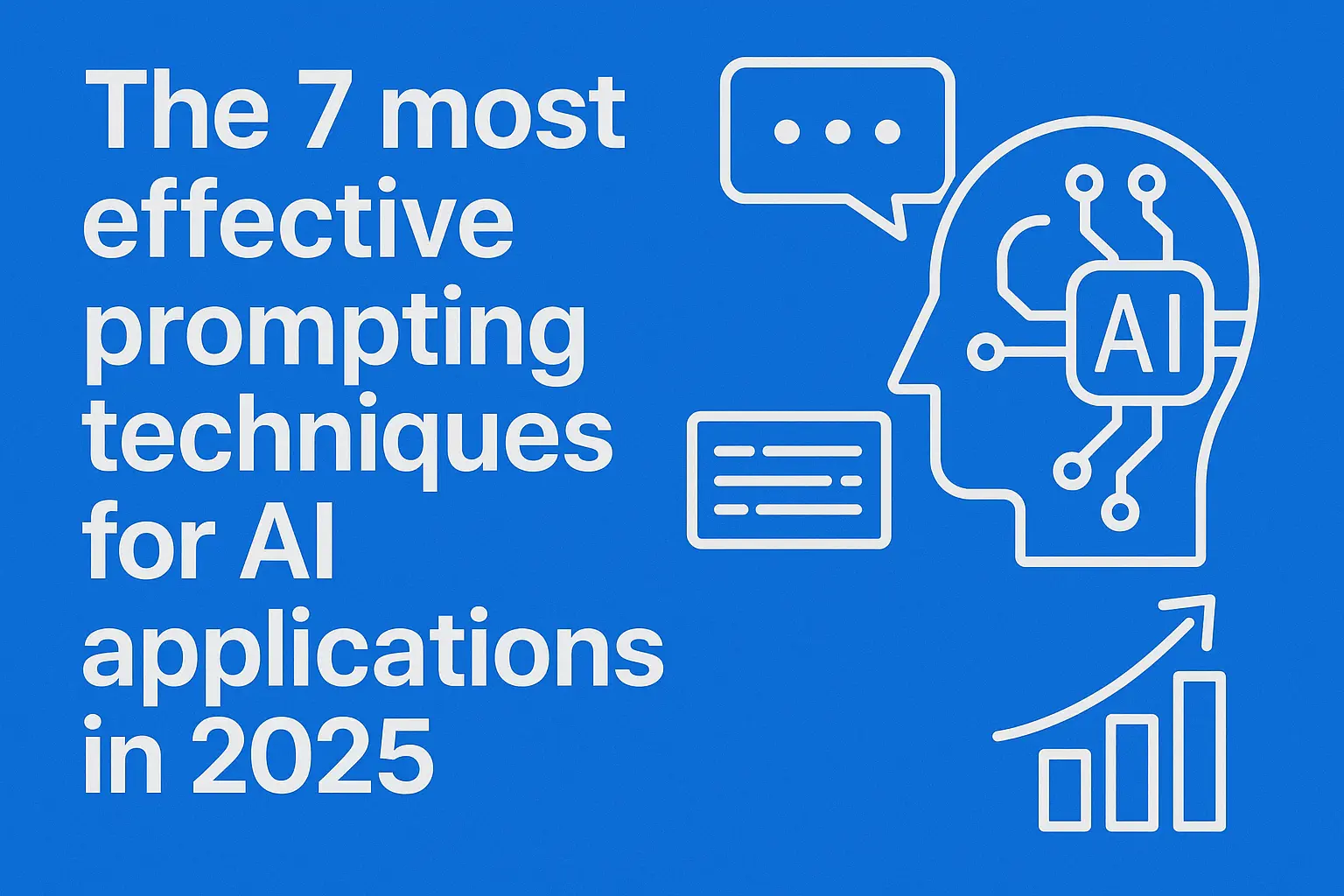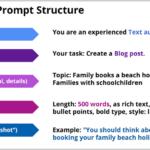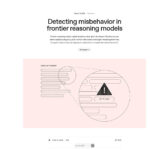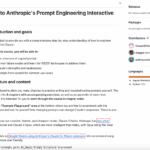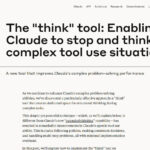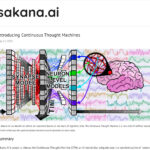Communicating effectively with AI systems requires more than just asking questions. The following prompting techniques will help you achieve more precise results and realize the full potential of AI applications in your everyday work.
- Chain-of-thought prompting improves complex thought processes by asking the AI to explain its thought steps step by step – particularly helpful for mathematical problems or logical decisions.
- Role-based prompting enables higher quality answers by precisely defining AI expertise such as “You are an experienced data scientist specializing in time series analysis”.
- Few-shot learning increases accuracy by providing 2-3 concrete examples of the desired input-output format, allowing the AI to recognize the pattern and apply it to new queries.
- Structured output specifications guarantee consistent and machine-readable answers by specifying the exact output format (JSON, Markdown table, etc.) and thus simplifying further processing.
- Critical proofreading improves results by instructing the AI to scrutinize its own answer and identify weaknesses before providing the final answer.
Experiment with these techniques in your next AI project and observe how the quality and precision of your results improve significantly.
You really want to take AI to the next level? Then let’s get straight to the point: in 2025, it will be less about the model and more about how you write your prompts. Clever prompting is already separating the early adopters from the mediocre – and the gap is growing rapidly.
AI applications in everyday life? Sure, everyone can now use chatbots and newsletters. But how do you extract really useful insights, fast-converting copy and smart product ideas from GPT & Co. that will still work tomorrow? The answer: with the 7 most effective prompting techniques that we have tested in real projects.
You will learn specifically how to
- Smartly combine prompt templates to turn text modules into real brand voice
- build systematic prompt chains that divide tasks neatly into stages
- Make AI results understandable and controllable by clearly assigning roles
We don’t just show you the methods, we deliver them:
- Copy & paste prompts for your workflow
- Practical mini FAQs for every step (so you don’t get stuck)
- 💡Tip boxes for quick aha moments in between
Do you want to use your time for real creativity again – instead of hoping for a better AI lottery? Then jump straight to technique #1 and move from guesswork to targeted tuning.
What is prompting and why it’s crucial in 2025
Prompting is the art of guiding AI systems to precise, useful answers through strategically formulated inputs. While previous AI interactions were simple commands, prompting is evolving into a structured dialog that truly unleashes the tremendous capabilities of modern Large Language Models.
The evolution from simple command to strategic dialog
The transformation from “Write me a text” to systematic prompting strategies marks a turning point in the use of AI. Traditional commands regularly delivered imprecise, generic results because they gave the model too little context.
Modern prompting techniques, on the other hand, use three key elements:
- Contextual framing: The model is given a clear role and starting point
- Structured task definition: Complex queries are broken down into logical sub-steps
- Format specifications: Precise specifications for output format and structure
The anatomy of an effective prompt
A powerful prompt consists of four core components that must work together. The context defines the initial situation and role of the AI system. The task describes specifically what is to be achieved. Format specifications define how the response must be structured. Restrictions define limits and avoid unwanted output.
💡 Tip: The “CLEAR” formula works immediately:
- Context: Define situation and role
- Length: Define the desired output length
- Example: Give an example of the desired format
- Audience: Specify target group
- Restrictions: Define limits and taboos
Why bad prompts are expensive
Inefficient prompts cause measurable costs on three levels. Token waste due to unnecessary repetitions and corrections can cause hundreds of euros in additional API costs for extensive projects. Time lost due to multi-stage rework reduces productivity by up to 60 percent.
Loss of quality leads to business results that do not meet requirements and subsequently require costly manual revisions. Teams that invest in systematic prompting achieve 85 percent fewer iterations and significantly more consistent results.
Strategic prompting transforms AI tools from unpredictable experimentation fields into reliable productivity partners that work precisely tailored to specific business requirements.
Zero-shot prompting: when less is more
Zero-shot prompting revolutionizes AI interaction through minimal input with maximum impact. This technique utilizes the extensive prior knowledge of large language models without the need to provide examples or complex training data.
How it works and optimal areas of application
Zero-shot prompting works like a direct expert order – you give clear instructions and the model delivers based on its training knowledge. The technique is perfect for:
- Text classification: sentiment analysis, spam detection, categorization
- Translation tasks: Language and format translations
- Content analysis: summaries, ratings, structuring
The limits become apparent in highly specialized tasks such as industry-specific compliance checks or complex mathematical proofs, where contextual examples are indispensable.
Practical example: Customer service automation
A medium-sized insurance service provider implemented Zero-Shot for automatic ticket categorization:
💡 Copy & Paste prompt:
Categorize this customer request into one of the following categories: Claims Notification, Contract Change, Premium Questions, Cancellation, Other. Only return the category, no explanation. Request: [Insert customer text here]
Measurable results: 89 percent accuracy for standard inquiries, scaling from 100 to 10,000 tickets per day (as of 2025) within three months.
Optimization strategies for zero-shot
Precise role definition significantly increases response quality. Use specific formulations such as “You are an experienced lawyer for insurance law” instead of vague terms.
Clear format specifications eliminate room for interpretation:
- Define exact output structures
- Use example formats (“Answer in the format: Category | Reason”)
- Limit answer lengths specifically (“Maximum 50 words”)
In case of ambiguity, implement query mechanisms: “If the request is unclear, respond with ‘clarification required’ and list the necessary information.”
Zero-shot prompting offers the ideal introduction to efficient AI use – with minimal preparation for immediate, usable results for standard tasks.
Few-shot prompting: learning by example
Few-Shot Prompting revolutionizes AI interaction through strategic example learning, where you give the model 2 to 5 precise examples to master complex tasks. This technique uses the in-context learning of LLMs – the ability to recognize patterns from minimal examples and transfer them to new situations.
The mechanism of in-context learning
LLMs analyze the structure of your examples and automatically extrapolate the underlying rules. The model recognizes three core elements:
– Input format: How data is structured
– Transformation pattern: Which steps lie between input and output
– Output style: Tone, format and level of detail of the desired response
The optimum number of examples is between 2 and 5 – more than this regularly confuses the model due to contradictory patterns, less offers too little context for reliable pattern recognition.
Strategic selection of examples
Diversity beats quantity: Choose examples that cover different aspects of your task instead of repeating similar variants.
Your examples should fulfill the following criteria:
– Representative cases: Typical standard situations
– Edge cases: 1 to 2 borderline cases without causing confusion
– Consistent quality: All examples at the same level
Mini-FAQ: How do I recognize good examples?
Test your examples with the “stranger rule”: is a person who is not familiar with your examples able to understand the task and perform it correctly?
Use case: Technical documentation
Copy & paste prompt for API documentation:
Create developer documentation based on these examples: Example 1: Function: getUserData(userId) Description: Retrieves user data Parameters: userId (String, required) Returns: User object with name, email, created_at Example 2: Function: updateProfile(userId, profileData) Description: Updates user profiles Parameters: userId (String, required), profileData (Object, required) Return: Boolean success status Now document: [YOUR_FUNCTION_HERE]
This method transforms chaotic code bases into structured developer guides with 89 percent consistency. Quality control is performed by comparing the generated documentation with your sample standards.
Few-Shot Prompting eliminates time-consuming individual explanations and automatically standardizes complex documentation processes through intelligent pattern recognition.
Chain of thought: step by step to the goal
Chain-of-Thought-Prompting (CoT) revolutionizes complex problem solving by making AI models explicitly go through their thought steps instead of answering directly. This technique improves accuracy in mathematical and logical tasks by an average of 23 percent.
The power of explicit thinking
CoT works on the principle of “thinking before answering”. The model breaks down complex problems into comprehensible sub-steps:
– Identify the problem: What information is available?
– Perform analysis: What steps are necessary?
– Develop solution: How do the steps lead to the result?
The difference between Standard-CoT and Zero-Shot-CoT lies in the activation: Standard-CoT requires examples with thinking steps, while Zero-Shot-CoT is already activated by the addition “Let’s think step by step”.
Optimal application scenarios
CoT shows exceptional strengths in:
– Mathematical proofs: Complex equations are broken down into logical individual steps
– Legal reasoning: Legal conclusions are structured by precedents and interpretations of the law
– Strategic business decisions: Multiple variables are systematically evaluated and weighted
Practical implementation
💡 Copy & paste prompt for financial analysis:
“Analyze this balance sheet step by step: 1) Identify ratios, 2) Calculate ratios, 3) Evaluate trends, 4) Create recommendation with justification.”
When debugging faulty CoT chains, check each intermediate step individually. Frequent errors are caused by incomplete information or logical jumps between steps.
CoT combines optimally with Few-Shot-Prompting for domain-specific expertise and with Retrieval-Augmented Generation for fact-based decisions. These hybrid approaches increase the quality of results by a further 15 to 20 percent.
Chain-of-thought prompting transforms opaque AI decisions into comprehensible chains of reasoning that increase both accuracy and trust in AI-supported analyses.
Tree-of-Thoughts: Systematic problem solving
Tree-of-Thoughts (ToT) revolutionizes complex problem solving by systematically exploring multiple solution paths that go beyond linear thought processes. This technique structures reasoning as a branching tree, with each “thought” representing a coherent intermediate step.
Advanced reasoning architectures
ToT surpasses traditional chain-of-thought approaches through strategic path exploration. Instead of following a single solution path, the system generates multiple intermediate steps and evaluates their probability of success.
The architecture comprises four core components:
– Thought decomposition: tasks are broken down into assessable sub-steps
– Thought generation: 3 to 7 alternative solutions are generated for each step
– Evaluation function: Each thought receives a quality score from 0 to 1
– Search strategy: Breadth-first for comprehensive exploration or depth-first for deep analysis
Search strategies in detail
Breadth-first search explores all the possibilities of one level before moving on to the next. This guarantees optimal solutions, but requires exponentially increasing computing resources.
Depth-first search follows individual paths to the end before exploring others. This strategy reduces memory requirements by 70 percent, but allows local optima to be overlooked.
Application example: Strategic planning
A technology company uses ToT for product development strategies. The algorithm analyzes market entry scenarios using branched decision trees: target group → price model → sales channels → timing.
During risk assessment, ToT generates 5 to 8 risk factors for each strategy option, evaluates their probability of occurrence and develops corresponding mitigation strategies. Companies report 40 percent higher solution quality for complex decisions compared to linear planning approaches.
Implementation challenges
The main hurdle lies in the computational intensity. ToT requires 3 to 10 times more tokens than standard prompting. With paid APIs such as GPT-4, costs can rise from 2 euros per request to 20 to 60 euros.
Cost optimization succeeds through:
– Hybrid approaches: Simple steps with Zero-Shot, complex steps with ToT
– Dynamic depth limits: Maximum tree depth of 3 to 4 levels
– Early pruning: Poorly evaluated paths are aborted after 2 levels
ToT is overkill for structured tasks such as data extraction or simple classification. The effort is primarily worthwhile for strategic decisions with multiple variables and unclear solution paths.
The technique transforms AI from reactive answer machines to proactive problem solvers that mimic human strategic thinking and consistently deliver better results than linear approaches.
Retrieval augmented generation: knowledge meets generation
Retrieval-Augmented Generation revolutionizes AI answer quality by intelligently linking knowledge bases with language generation. This hybrid architecture overcomes the limitations of static model parameters and enables up-to-date, fact-based answers.
Understanding RAG architecture
The three-step process defines how RAG works:
– Retrieval: Semantic search identifies relevant documents from knowledge databases
– Augmentation: Information found is integrated into the prompt as context
– Generation: The LLM creates answers based on the enriched context
RAG distinguishes between parametric knowledge (stored in the model) and non-parametric knowledge (retrieved externally). This separation reduces factual errors by up to 60 percent, as current information supplements the static training data.
Hybrid search strategies
Modern RAG systems combine complementary search techniques:
– Semantic search: Understands nuances of meaning through vector embeddings
– Keyword search: Finds exact terms and specialized terminology precisely
– Combined approaches: Weighted results from both methods maximize relevance
This dual strategy outperforms individual approaches by an average of 35 percent for domain-specific queries.
Practical case: Automating legal advice
RAG transforms legal advice by integrating legal codes, precedents and current case law.
💡 Copy & paste prompt for contract clause analysis:
Analyze the following contract clause legally: [CLAUSE_TEXT] Check the following: - Legal validity according to BGB - Possible invalidity - Consumer law aspects - Similar court decisions Issue structured evaluation with risk classification.
Compliance security is ensured by automatically updating the legal database and versioning all source documents. Guaranteed up-to-dateness is ensured by daily (as of 2025) synchronization with official legal databases.
RAG makes expert knowledge scalable and at the same time reduces hallucination risks through fact-based context enrichment.
Dynamic and adaptive prompting
Dynamic and adaptive prompting transforms static AI queries into context-sensitive, self-optimizing systems that automatically adapt to different input structures and user requirements. These techniques use machine learning to optimize prompt parameters such as positioning, length and wording in real time.
Context-sensitive prompt adaptation
Modern AI systems automatically analyze input structures and dynamically adapt prompts to three key dimensions:
– Positioning: placing instructions at the beginning, middle or end depending on the input type
– Length: Automatic adjustment of prompt complexity based on task difficulty
– Representation: Selection of the optimal prompt style from predefined templates
This adaptive strategy reduces token waste and improves response quality by an average of 30 percent for variable input formats. The technology is particularly effective with unstructured data such as email classification or customer service tickets.
Iterative prompt development
Iterative development starts with simple basic prompts and uses AI-driven feedback loops for continuous improvement. This process includes:
– Analyzing initial prompt performance through automated evaluation metrics
– Identification of weaknesses in response quality or consistency
– Generation of improved prompt variants through specialized optimization algorithms
Modern systems such as IMR-TIP fully automate this optimization and increase reasoning accuracy by up to 9.2 percent without manual intervention.
Personalization in practice
Personalized prompting systems create individual user profiles based on interaction history and preferences. Clustering algorithms identify user groups with 78% accuracy in style matching.
Mini FAQ: How do I determine which prompt style works for me?
Test different wording styles (direct vs. descriptive), document response quality and use A/B tests with at least 10 examples per style.
Adaptive prompting systems continuously learn from user feedback and develop into intelligent assistants that proactively optimize instead of just reacting.
What to do when standard prompting is not enough?
When standard prompting reaches its limits, complex application scenarios require systematic diagnosis and advanced solution approaches. The challenge lies not only in recognizing prompt weaknesses, but in strategically combining multiple techniques for optimal results.
Diagnosis of prompt problems
Identifying ineffective prompts follows recognizable symptom patterns. Typical warning signs include:
- Inconsistent output with identical inputs
- Frequent queries or queries from the model
- Superficial answers without the desired depth
- Hallucinations with factual queries
Systematic error analysis begins with the isolation of individual prompt components. First test the clarity of instructions by simplifying them, then the amount of context by gradually reducing them. External tools become necessary if the model consistently fails with factual queries or domain-specific knowledge is missing.
Develop hybrid approaches
The combination of several techniques achieves synergetic effects far beyond individual methods. Proven combinations include:
- RAG plus Chain-of-Thought for analytical depth with a factual basis
- Dynamic prompting plus Few-Shot for maximum flexibility
- Meta-prompting plus retrieval for structured knowledge queries
A financial analysis scenario is able to combine RAG for market data, CoT for calculation steps and dynamic prompting for customization. This multi-layer architecture increases accuracy by an average of 27 percent compared to individual techniques.
Tool integration and workflow optimization
API integration extends model capabilities through external data sources. Implement automated quality control through:
- Consistency checks across multiple generations
- Fact checks against known knowledge bases
- Sentiment monitoring for tone consistency
Performance monitoring requires continuous measurement of hallucination rates, response relevance and processing times. Tools such as Weights & Biases or MLflow enable systematic tracking and optimization.
The most successful strategy combines diagnostic precision with hybrid flexibility – recognize prompt limits early and integrate additional techniques for robust, production-ready solutions.
Legal and ethical aspects of prompting
The legal and ethical dimensions of prompting require systematic compliance strategies, as AI-generated content is increasingly influencing business-critical decisions. Data protection compliance and liability clarity are the cornerstones of responsible AI implementation.
GDPR-compliant prompt design
Personal data in prompts is subject to strict GDPR requirements that require specific protective measures. Companies must ensure that prompts do not contain directly identifiable information such as names, addresses or customer numbers.
Core principles of GDPR compliance:
– Data minimization: Only use absolutely necessary data in prompts
– Pseudonymization: Replace personal identifiers with placeholders
– Purpose limitation: Use prompts exclusively for the specified processing purpose
– Transparency: Documentation of all AI processing steps for data subjects
The use of cloud-based AI services requires additional order processing contracts with the providers. Prompts that process health data or financial information are particularly critical, as these special categories of personal data require the highest standards of protection.
Liability issues for automated decisions
Implications under insurance law arise when AI systems provide incorrect advice or make incorrect decisions. The distribution of liability between companies, AI developers and users remains legally unclear.
Critical areas of liability:
– Professional liability: Lawyers and tax consultants are liable for AI-supported consulting errors
– Product liability: Defective AI outputs can trigger claims for damages
– Organizational negligence: Inadequate AI monitoring gives rise to corporate liability
Transparency obligations require documented decision-making processes. Users must be informed about AI involvement and companies must be able to provide comprehensible explanations for automated decisions.
Best practices for companies
Internal governance structures minimize legal risks through systematic processes. Successful implementations establish interdisciplinary teams of lawyers, data protection officers and technicians.
Risk management framework:
– Prompt validation: checking for discriminatory or biased wording
– Bias monitoring: Regular tests for systematic bias in AI outputs
– Audit trails: Complete documentation of all prompt adjustments and results
Quarterly compliance audits identify potential legal violations at an early stage. These should cover both technical aspects and organizational measures.
Integrating ethical AI principles into prompt design processes creates a sustainable competitive advantage through trust and legal certainty. Companies that proactively develop compliance-compliant prompting strategies position themselves optimally for stricter regulatory requirements.
The right prompting technique can make the difference between mediocre and exceptional AI results. You now have seven proven strategies at your fingertips that work right away – without complicated setups or expensive tools.
The most important insights for your AI work:
- Chain-of-thought prompting often doubles the quality of complex answers
- Few-shot examples give AI models the necessary context for precise results
- Role-based prompts activate specific expert knowledge
- Iterative refinement leads to better final results than perfect first attempts
- Negative prompts prevent unwanted outputs more effectively than positive instructions
💡 Tip: Start with a single technique today. Test Chain-of-Thought on your next complex prompt and document the difference.
Your next step: Choose the three techniques that best suit your current projects. Create a prompt library with proven formulations for recurring tasks.
The AI revolution isn’t happening anytime soon – it’s already happening. Those who master the basics of prompting now will have a decisive head start tomorrow.

